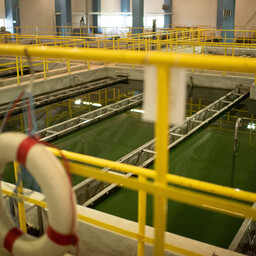A lot of sludge is generated during wastewater treatment. In Estonia, it is used as fertilizer. This is regulated to protect the environment and people.
Margit Heinlaan and her colleagues investigated how much microplastic is in the water of wastewater treatment plants. Microplastics are small pieces of plastic that do not dissolve in water. The study looked at six different treatment plants.
The study results showed that treatment plants remove 99.6–99.8% of plastic particles from water. This is a very good result. However, there are still small amounts of microplastics in the effluent.
Microplastics end up in the sewage sludge from the treated water. In Estonia, it is not incinerated but used in landscaping and agriculture. Thus, plastic enters nature.
Heinlaan and her team are currently conducting new analyses to determine the microplastics and other substances in sewage sludge. They are trying to find ways to reduce the amount of microplastics.
Plastic can break down into smaller particles. Plastic contains many different substances. Their impact on nature and health is still unknown.
Microplastics can also be found in house dust and city streets. It is difficult to completely avoid it. Although the plastic particles used in agriculture do not affect food safety, the accumulation of microplastics in the soil needs to be limited.

